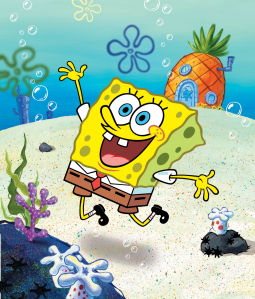It’s Not Nautical Nonsense
Imagine this: You’re an underappreciated short-order cook at a fast food restaurant, your boss is a miserly crab, your coworkers hate you, and you rely on public transportation because, despite years of schooling, you can’t seem to pass the driving test. Now imagine that despite all of this you’re relentlessly optimistic.
Not likely. But for 10 years now, SpongeBob SquarePants has maintained this existence and managed to keep his yellow porous chin up.
Though most people wouldn’t be nearly as optimistic under such circumstances, the title character in Nickelodeon’s animated series has resonated with viewers of all ages. And now there’s scientific reasoning why we humans can relate to a square-pants-wearing sponge who lives in a pineapple under the sea.

RTB biochemist Fuz Rana responded to this study in the August 10th podcast of Science News Flash. He explained that sponges have around 30,000 genes (similar to the number humans and most complex animals possess). And about 19,000 of those genes are known to correspond with genes in other animals, including human beings. Evolutionary biologists see the common gene set as evidence for common ancestry. Fuz argues, however, that this commonality can be understood from a Christian perspective as evidence for common design (where God takes the same genetic framework and alters it in a purposeful and supernatural way).
Researchers also found that sponges have a much more complex system, biochemically and genetically speaking, than anybody would’ve ever imagined.
Scientists believe that the first multicellular organism to have existed would have been similar to a sponge. So the fact that sponges (and other Ediacaran organisms) have such a complex system makes the “complexity out of nowhere” riddle difficult to solve within an evolutionary framework.
Fuz explains, “To go from a single-celled organism to a multicellular organism requires some fairly sophisticated changes in the metabolism and the biochemistry of cells; in fact it requires that the cells operate in a completely different paradigm.” Rather than demonstrating a naturalistic perspective, this finding provides powerful support for a creation worldview—one that explains the origin of complex animal forms and accounts for complexity out of nowhere. That’s something to be optimistic about.
– Sandra
If you missed this episode of Science News Flash, check it out here: “Scientists Find Sea Sponges Share Human Genes.” And consider subscribing to Science News Flash on iTunes.





